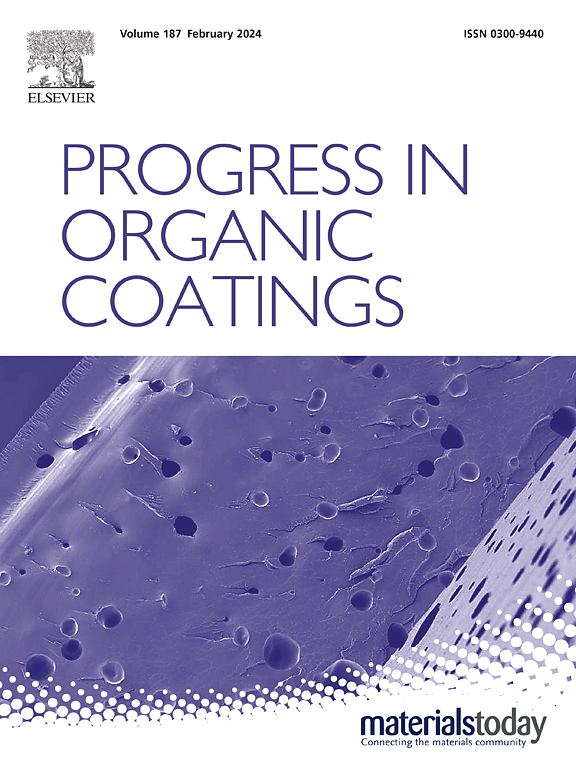Facile construction of fluorine-free hydrophobic cotton fabrics by thiol-ene click reaction for oil-water separation
IF 6.5
2区 材料科学
Q1 CHEMISTRY, APPLIED
引用次数: 0
Abstract
Fabrication of environmental-friendly hydrophobic materials is significantly important but challenging. Herein, utilizing the versatile thiol-ene click reaction, a pre-designed allyl-containing cyclophosphazene (CCPD) was facilely grafted onto the surfaces of organosilicone modified cotton fabrics (MPTES-CFs), and fluorine-free hydrophobic cotton fabrics (CCPD-MPTES-CFs) were fabricated. The structure analyses revealed the successful formation of the cyclophosphazene-based polymeric layer on the surface of cotton fabrics. The static contact angles (CAs) of CCPD-MPTES-CFs were measured, and the results indicated the superhydrophobicity of the clicked fluorine-free CCPD-MPTES-CFs with the CAs of up to 153.6°. CCPD-MPTES-CFs can maintain highly hydrophobic stability even without significant decrease in CAs after immersing in acid and base solutions for 21 days. Additionally, the clicked samples possess good self-cleaning property upon exposure to various liquids. The studies of CCPD-MPTES-CFs in oil-water separation demonstrated the excellent efficiency rate of 98.3 % for n-hexane and 98.2 % for toluene with separation fluxes being of 5720 and 5850 L/(m2⸱h), respectively. This study demonstrated that utilizing the versatile thiol-ene click reaction, fluorine-free hydrophobic cotton fabrics can be facially fabricated by grafting functionalized cyclophosphazene onto their surface.

求助全文
约1分钟内获得全文
求助全文
来源期刊

Progress in Organic Coatings
工程技术-材料科学:膜
CiteScore
11.40
自引率
15.20%
发文量
577
审稿时长
48 days
期刊介绍:
The aim of this international journal is to analyse and publicise the progress and current state of knowledge in the field of organic coatings and related materials. The Editors and the Editorial Board members will solicit both review and research papers from academic and industrial scientists who are actively engaged in research and development or, in the case of review papers, have extensive experience in the subject to be reviewed. Unsolicited manuscripts will be accepted if they meet the journal''s requirements. The journal publishes papers dealing with such subjects as:
• Chemical, physical and technological properties of organic coatings and related materials
• Problems and methods of preparation, manufacture and application of these materials
• Performance, testing and analysis.
 求助内容:
求助内容: 应助结果提醒方式:
应助结果提醒方式:


